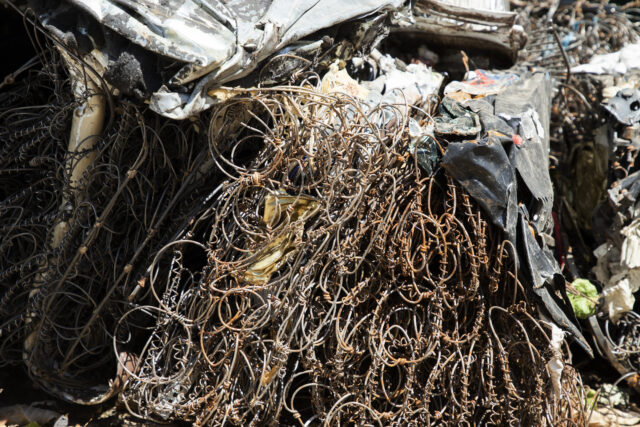
Excessive moisture in your shredding process is an ongoing challenge. Lessening the amount of moisture can have a significant improvement on your bottom line, especially during weather-related inclement months.
Excessive moisture can cause the following issues:
Excessive oxidation
Poor scrap quality of FE (ferrous) and NF (non-ferrous) is mostly associated with excessive oxidation of the finished product, and represents yield loss for the end consumer.
Most domestic FE and NF scrap is consumed within the period when it’s transferred from the processer to the end consumer – generally within 30 days or less.
When this material is shipped internationally via export container or bulk vessel, however, the travel time from processor to end consumer is increased by an average of one (1) to two (2) months – causing a lot more oxidation to take place and yield loss for the consumer.
Clogged shredder discharge process
Excessive moisture content in the shredder’s raw material in-feed stream, combined with freezing conditions in winter, can cause material to clog in the shredder discharge process from the shredder box.
Moisture can also freeze up on material handling belts and cause problems during start up at the beginning of a production cycle.
Increased weight of by-products
Added moisture means additional weight (e.g. ASR) which increases transportation and disposal costs.
Increased purchasing costs
Excessive moisture in raw material scrap adds increased purchasing costs for shredder materials by increasing the weight for your purchased materials.
Dangerous conditions
Excessive moisture on FE shred during winter’s freezing temperatures can cause an explosion inside an EAF in the steel mill’s melt shop.
Other issues
Increased weight and material shortages in the transportation process caused by excess moisture are also very prevalent.
Tips for mitigating excessive moisture in the shredder production process:
✔️ Store raw material and finished product covered storage areas (e.g. under roof)
✔️ Tarp or cover materials in all phases of the transportation process where possible
✔️ Create storage pads on hard surfaces where exposure to sunshine (or solar rays) is available.
✔️ Use and recycle heat coming off your shredding process by collecting and directing it to preheat both raw materials and finished products.



